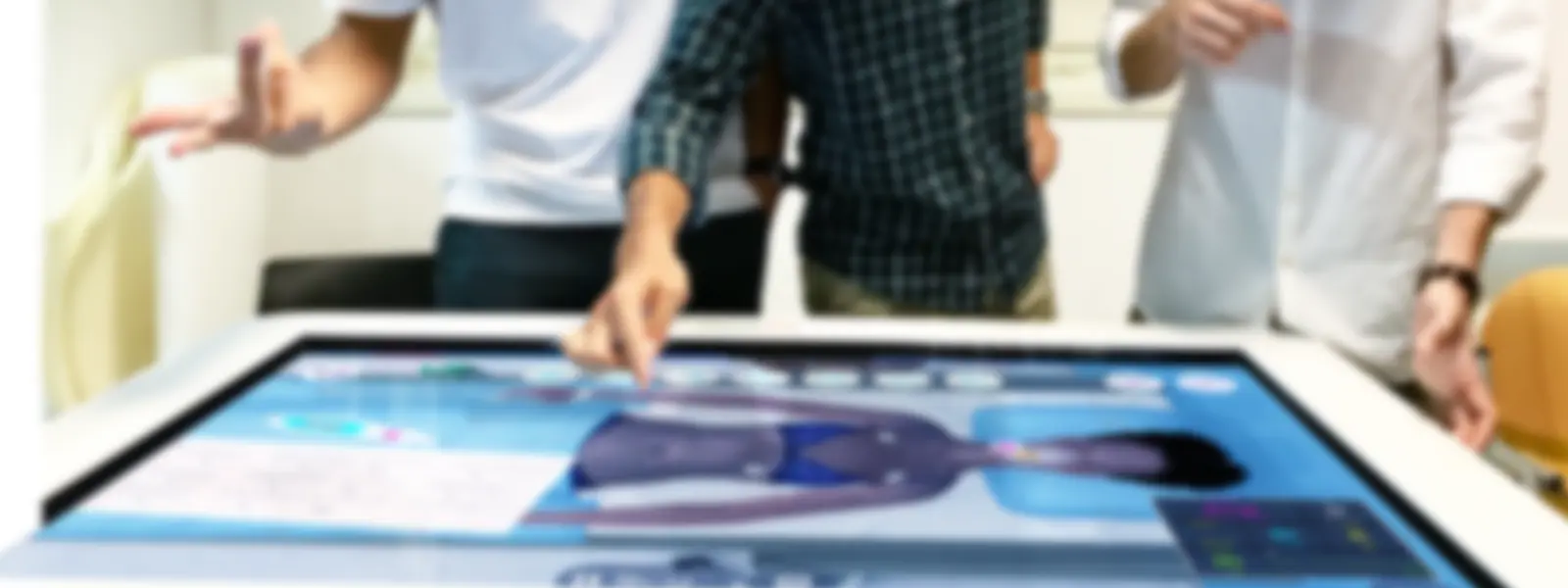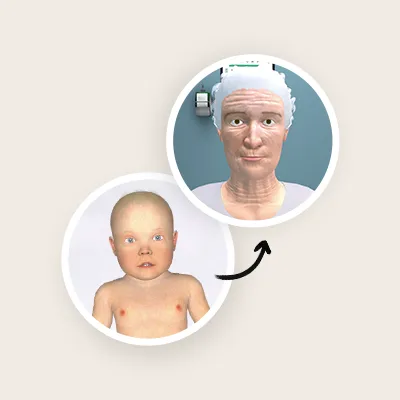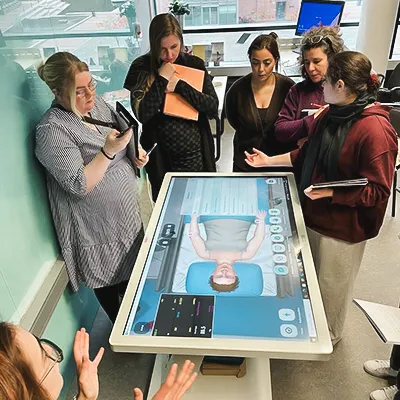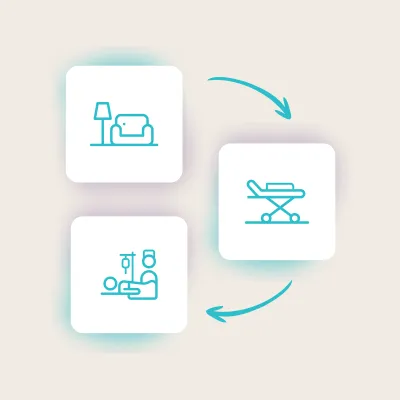OSCE Implementation in Nursing Degree
Laureate Group in Mexico | SOCHISIM Webinar
On the 26th of May, the Chilean Simulation Society (SOCHISIM), held a webinar that counted on the participation of Professor Jessy Mariel Escobar Cantarero, the Director of Educational Model and New Technologies for Health Science both at UNITEC and UVM, in Mexico.
Since 2021, UNITEC has started this project of implementing OSCEs with Virtual Patients in the Nursing curriculum.
The Laureate group in Mexico is composed of UNITEC and UVM. This group has a dense structure of campus focusing on teaching in the healthcare field, all over Mexico, and currently, they have 25 simulation centers.
Although classic written test are necessary and very commonly used, not all skills required by the healthcare professionals can be assessed in this traditional way. To address this gap, and as an alternative method fot assessing clinical performance, the OSCEs (Objective Structured Clinical Examinations) were developed and first described by Harden and his colleagues in 1975.
Assessment of Nursing students and professionals
OSCEs goals at Laureate group – Mexico
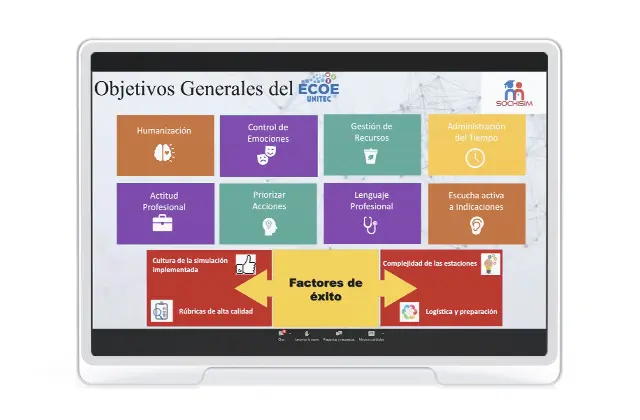
As Profesor Jessy Mariel Escobar Cantarero mentioned, at the Laureate group in Mexico, both face-to-face and remote OSCEs have been conducted.
As general objectives for the OSCEs the group aimed to focus on the following topics:
- Humanization;
- Emotions management;
- Resources management;
- Time management;
- Professional attitudes;
- Prioritization of actions and decisions;
- Professional communication;
- Active listening;
According to Professor Jessy Mariel Escobar Cantarero what, to some degree, led to the success of this project was:
- The culture of simulation is already implemented in the curricula of the institution;
- Development of high-quality assessment criteria and instruments;
- Complexity of OSCE stations, suitable to the levels of students;
- Logistics and preparation of the assessment;
OSCEs – before, during and afterwards
Implementing face-to-face OSCEs is a demanding task, involving detailed planing of both the logistic and academic side, before, during and after the OSCE.
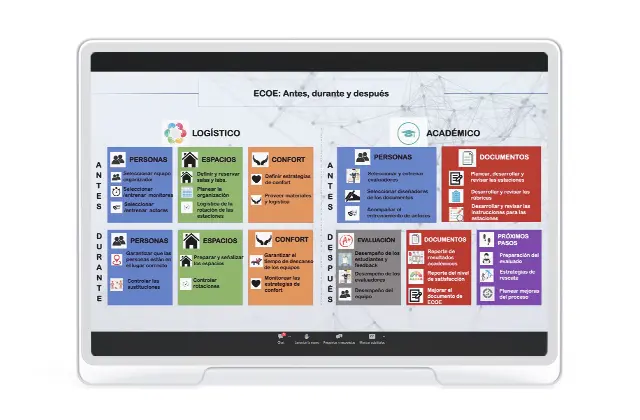
COVID-19 – the adjustments required
COVID-19 propelled what the Laureate group had already decided that needed to be done in a more efficient way, due to the large group of students being taught and assessed. Searching for a tool that could help overcome this constraint, Professor Jessy Mariel Escobar Cantarero mentioned that they found Body Interact, Virtual Patients.
What was their main goal and challenge at this moment?
To assess the clinical skills of students managing the patient in a holistic approach, before having them go to the social services students have to attend for one year.
How did they decide to do it?
Implementing the digital version of the OSCEs using for this purpose Body Interact as the vehicle to implement it.
Body Interact allows to plan for OSCEs, through its Learning Management System, the Studio, and this caught the attention of the faculty.
Professor Jessy Mariel Escobar Cantarero vividly recommends that institutions pilot any project that is disruptive and different from what has been done so far, before implementing it on a large scale.
OSCEs implementation – the virtual approach
This massive implementation by the Laureate Group extended for a period of 14 weeks/ 7 steps:
- Presentation to the faculty of the targeted curricular unit that an OSCE was going to take place in their course;
- Students were informed about and how the evaluation was going to be implemented;
- Platform preparation, by selecting the cases, preparing the sessions, assigning it to students, preparing the evaluation domains and its the instructions;
- Reminder for teacher;
- OSCE implementation, in a limited amount of time;
- Feedback. Although Body Interact provides a feedback on performance, also the professors provided feedback adding a qualitative evaluation of the student. For quantitative information the student can rely on the information provided by the simulator;
- Questionnaire presented to students to collect their feedback on experience with this evaluation;
In an initial stage the 5th step, of OSCE implementation was done in a remote way, according to the needs in lock down times. Currently the students can either perform the OSCE in their own home or they can do it at the campus.
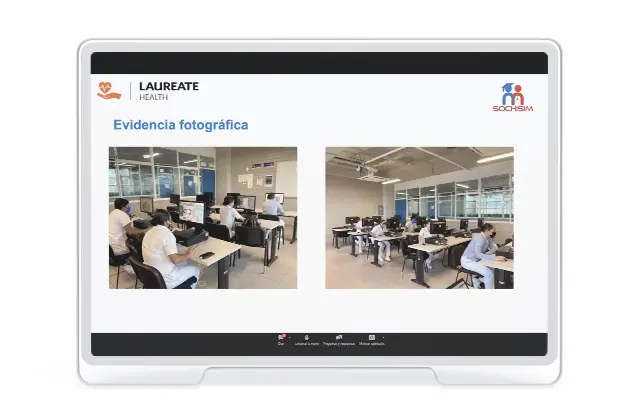
According to the feedback collected from teachers, globally the faculty recognized the relevance of this assessment, as it also allows them to realize how the teaching-learning process is going and how the students stand in these matters.
In terms of domains of evaluation, the Laureate group, focus the OSCEs on physical evaluation, diagnostic activities and treatments.
Professor Jessy Mariel Escobar Cantarero presented the comparison of the answers provided by students regarding the experience with face-to-face and virtual OSCEs and data was quite similar with students: 94 to 96% of students considered the use of OSCEs as a learning experience.
One other conclusion extracted from student feedback regarded what the faculty concluded was the need to look into the treatment domain. So coming back to the curriculum, the faculty decided there was a need to make adjustments in the contents of the courses that mostly impacted the treatment domain, and also add and make adjustments to the clinical scenarios being provided so that this gap could be bridged.
Having made these changes, what the Laureate Group found in the cohort of 2023 student data was:
- Reduction on the differences found on global scores with and without penalties applied to cases resolution
- Globally higher ratings for all campus
- Higher uniformity of data between the different campus
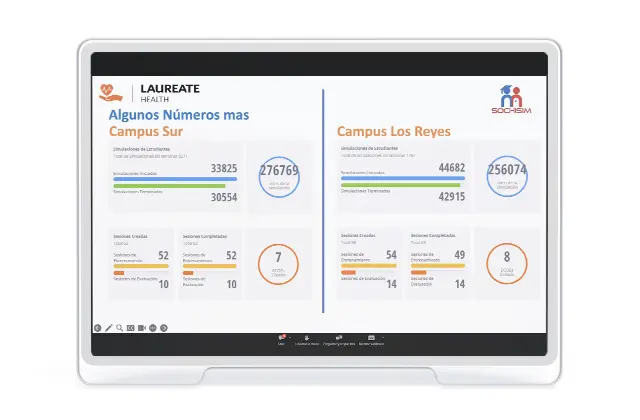
To conclude this presentation that explores face-to-face and virtual OSCEs, Professor Jessy Mariel Escobar Cantarero highlighted:
- Virtual OSCEs required way less human resources than face-to face
- Virtual OSCEs only require computer (personal or the ones from the institution), unlike face-to face OSCEs that require many rooms and materials to replicate the stations
- Virtual OSCEs take the time of doing the virtual clinical case, face-to-face OSCEs take all day to be concluded
- Virtual OSCEs with Body Interact generate automatic outputs of the outcomes, and face-to-face OSCEs require that the faculty review and fulfill the evaluation documents
- Virtual OSCEs generate low to medium levels of stress, unlike face-to-face OSCEs
Daniela Abreu – Body Interact Instructional Designer

